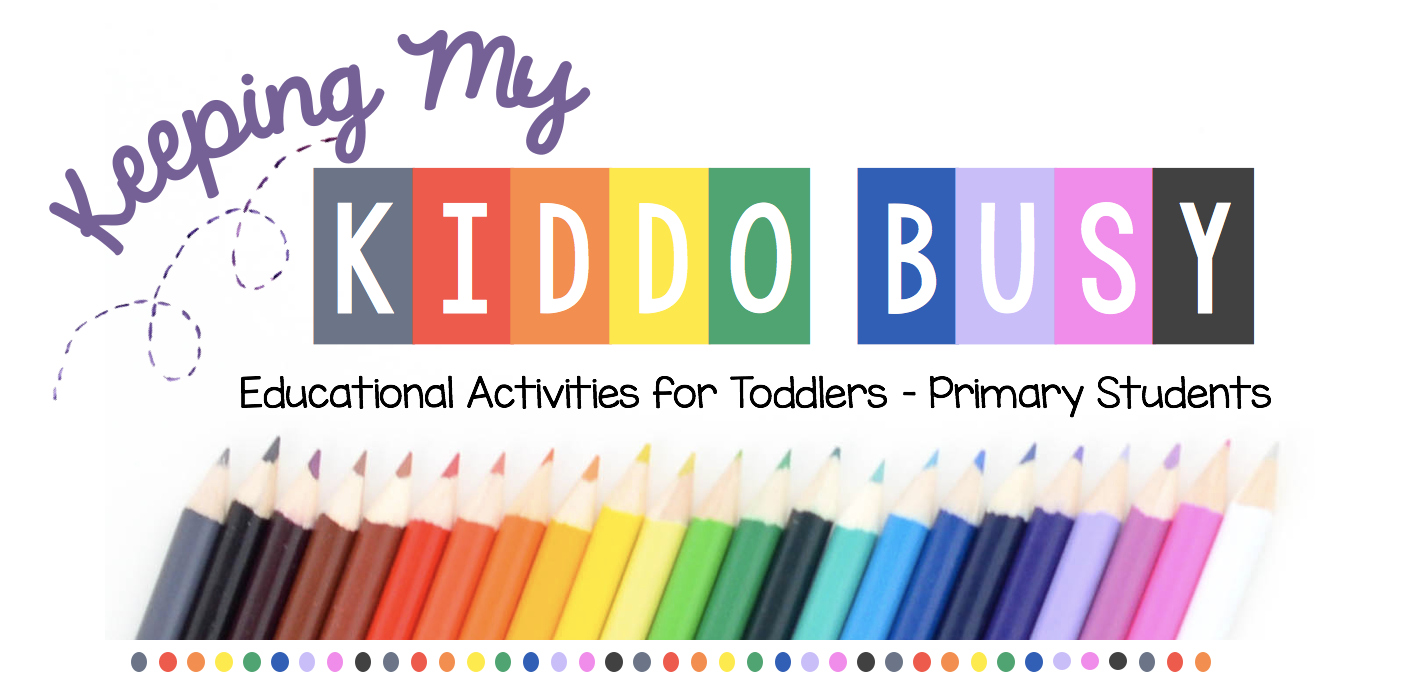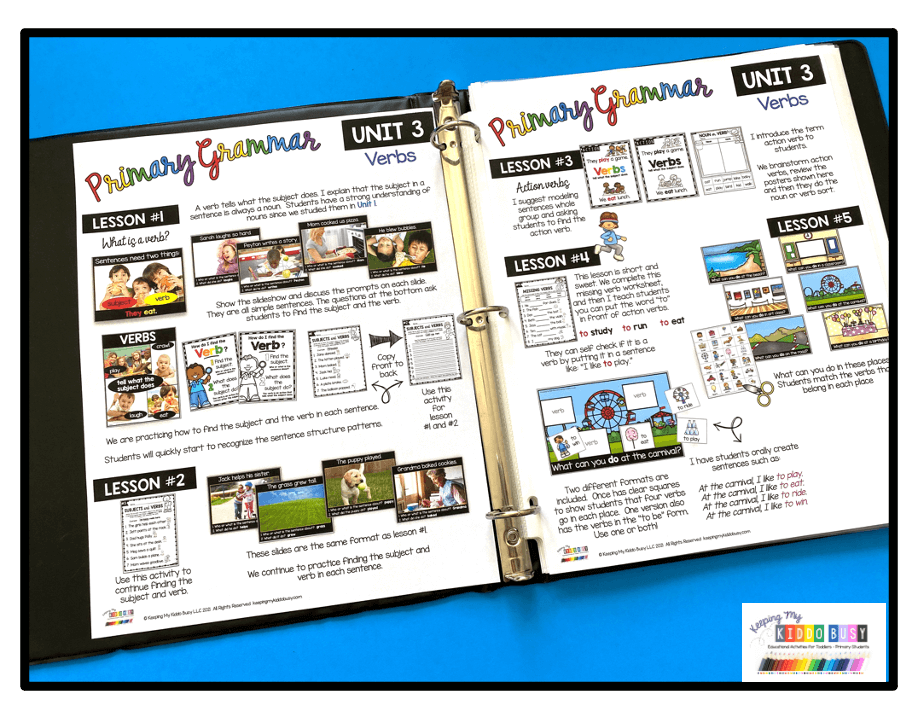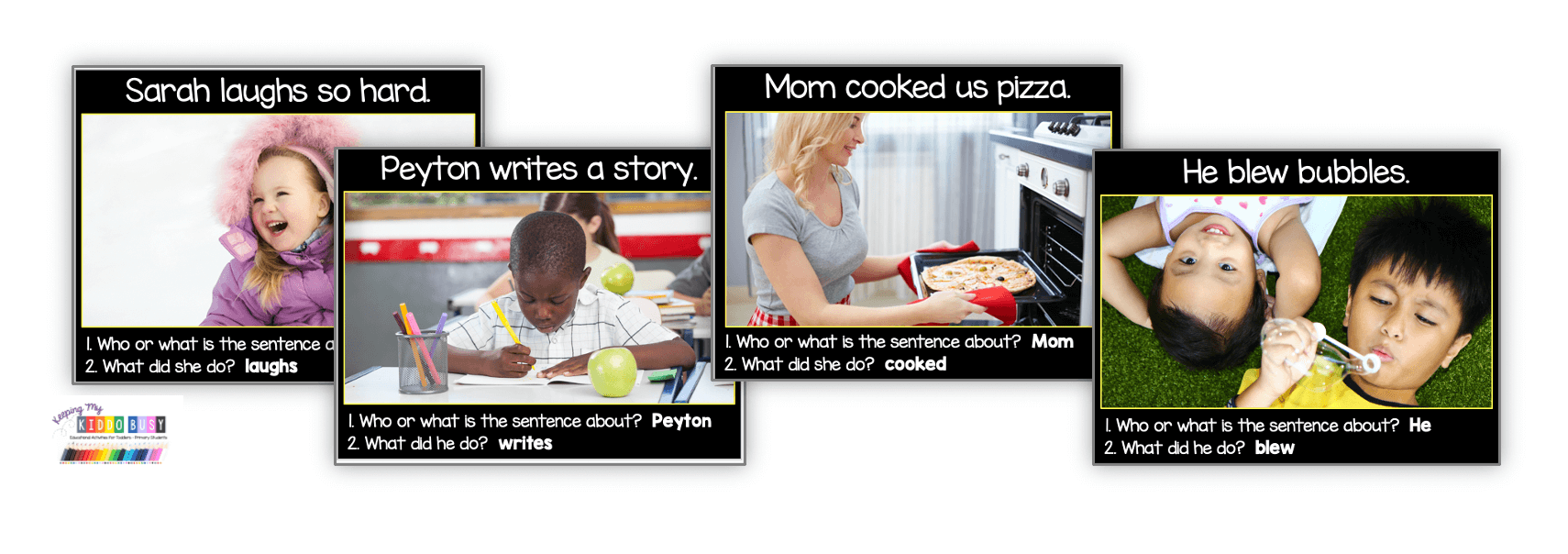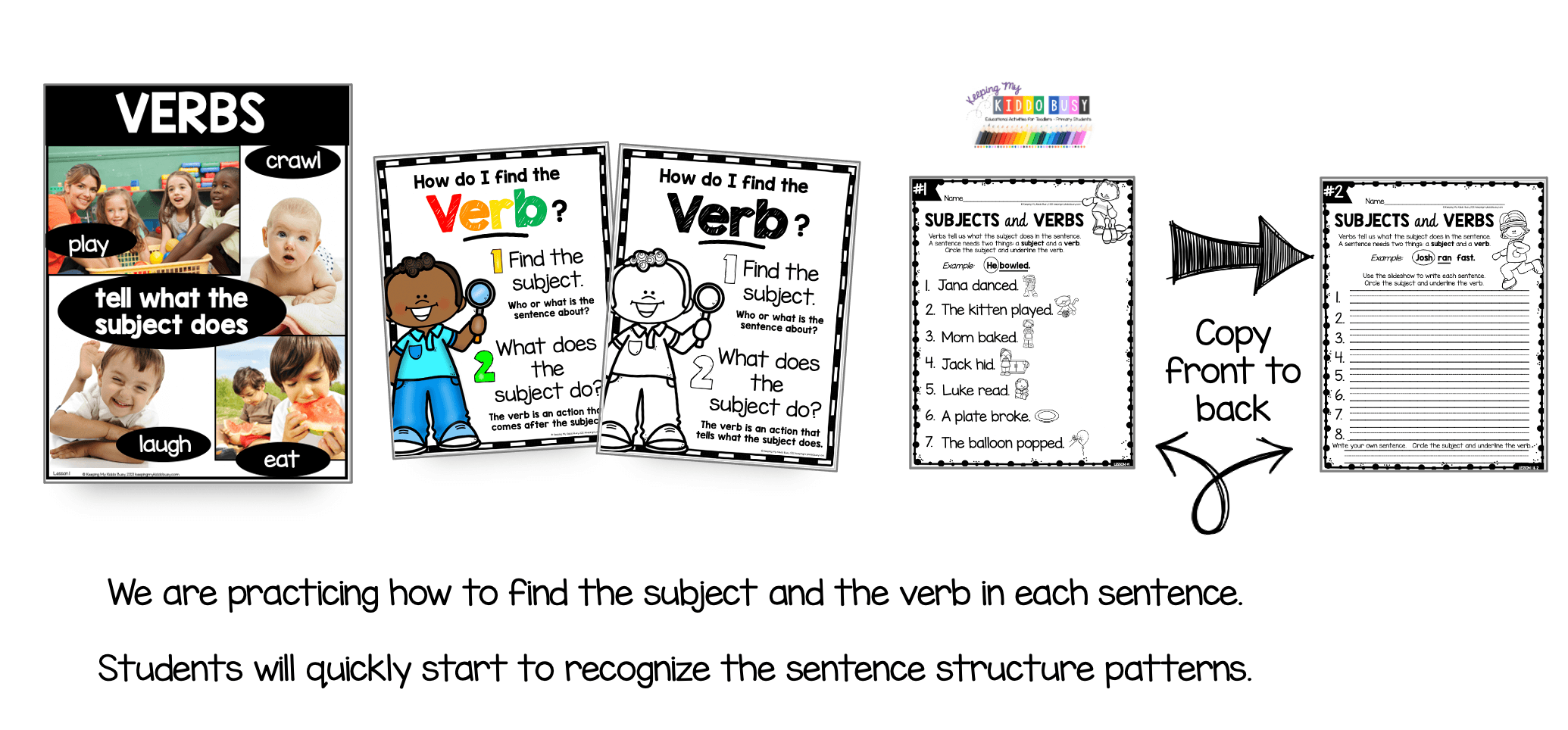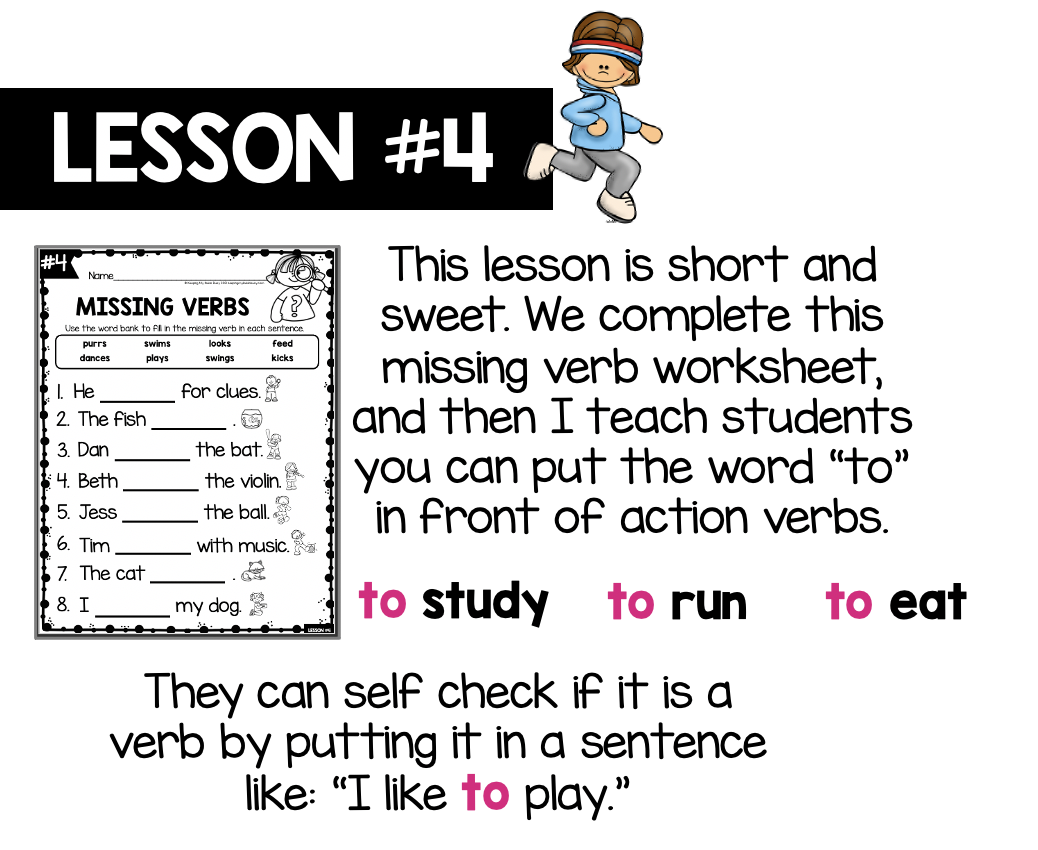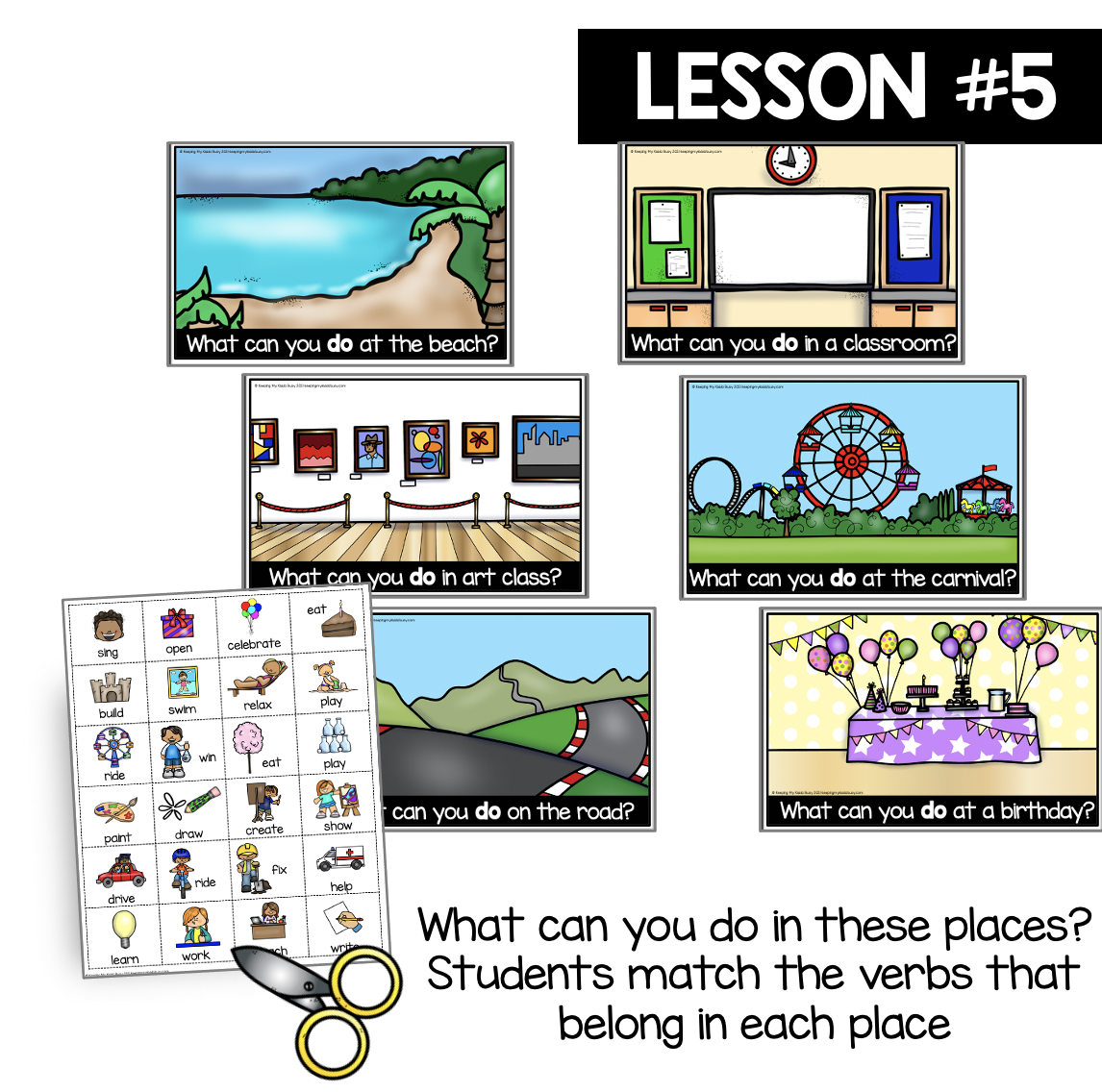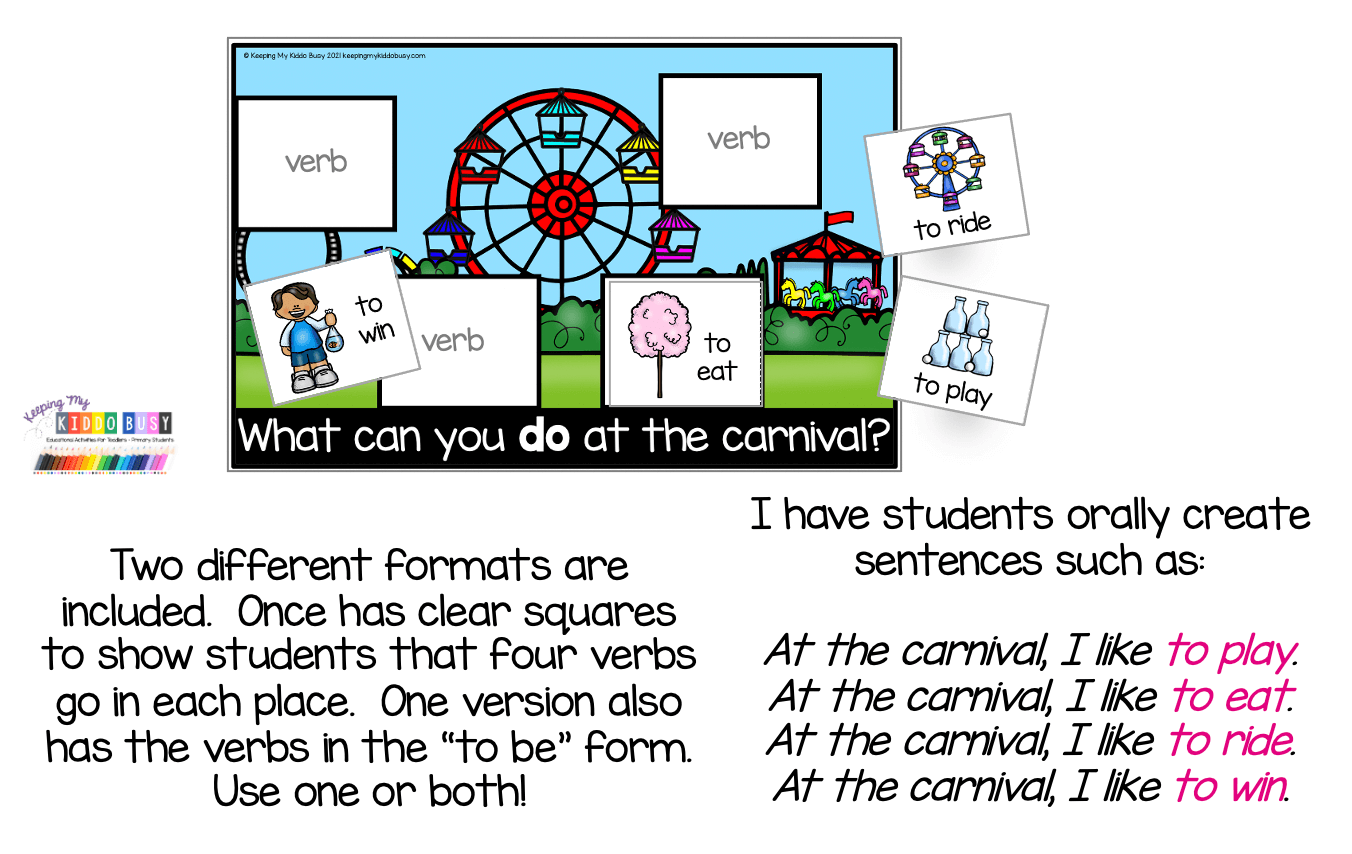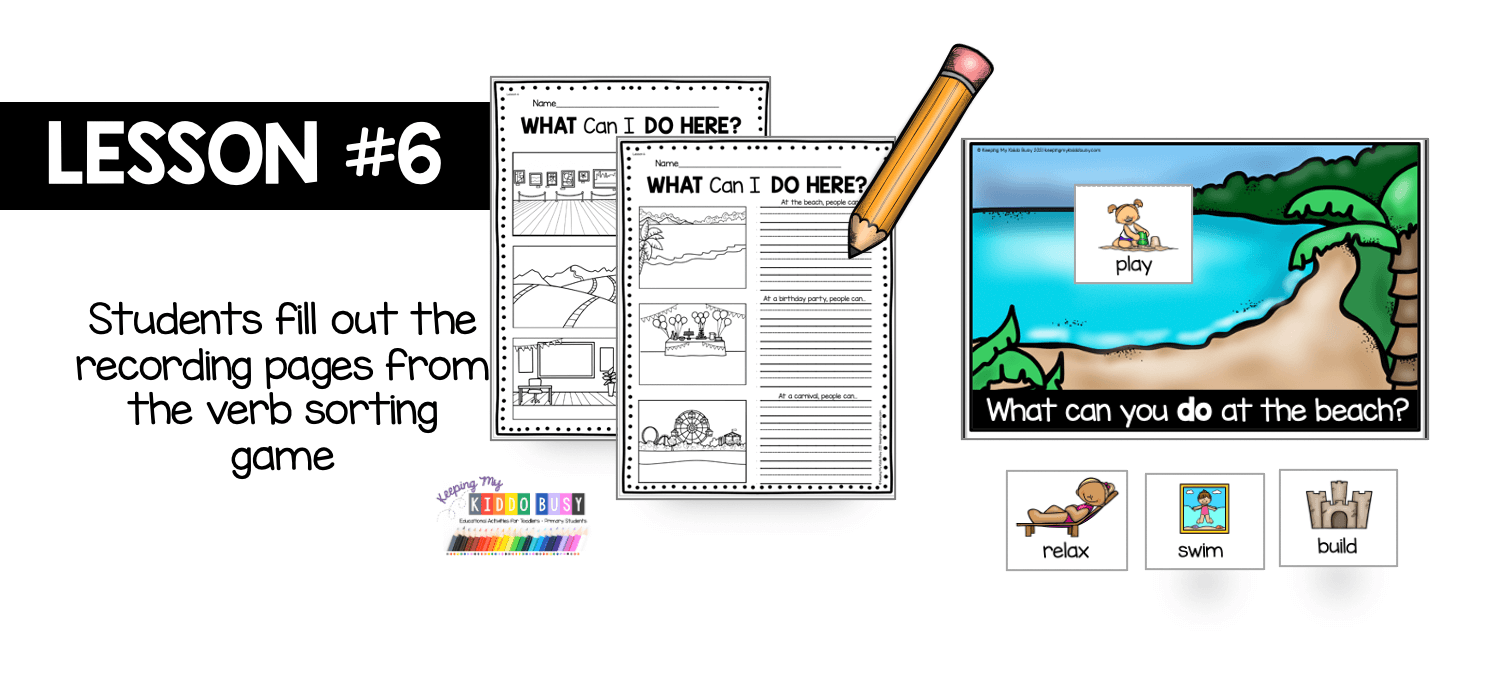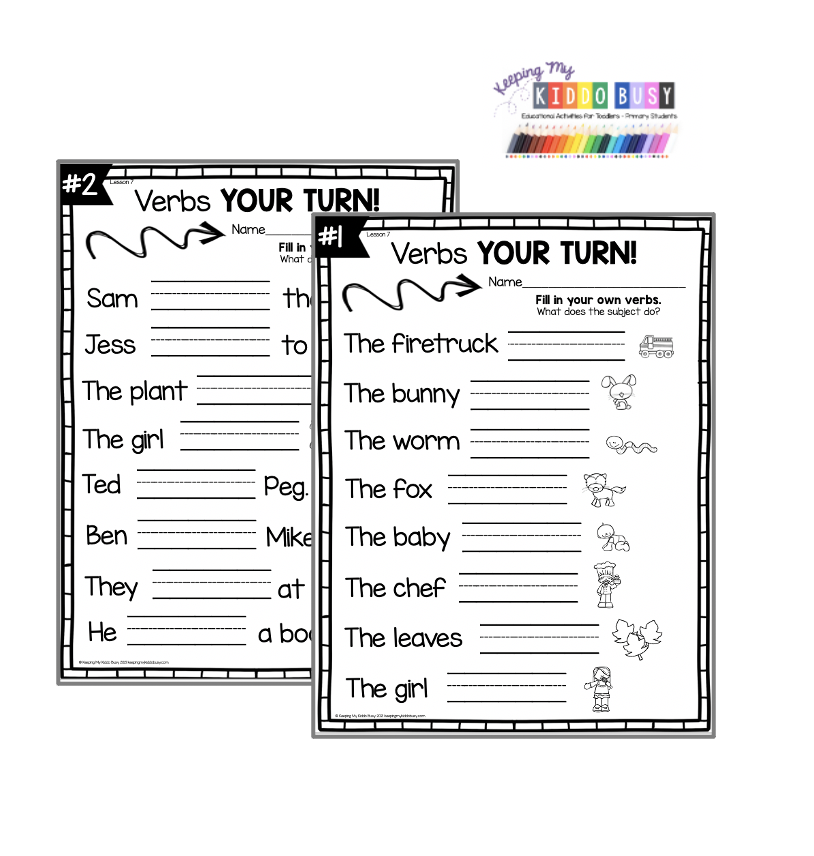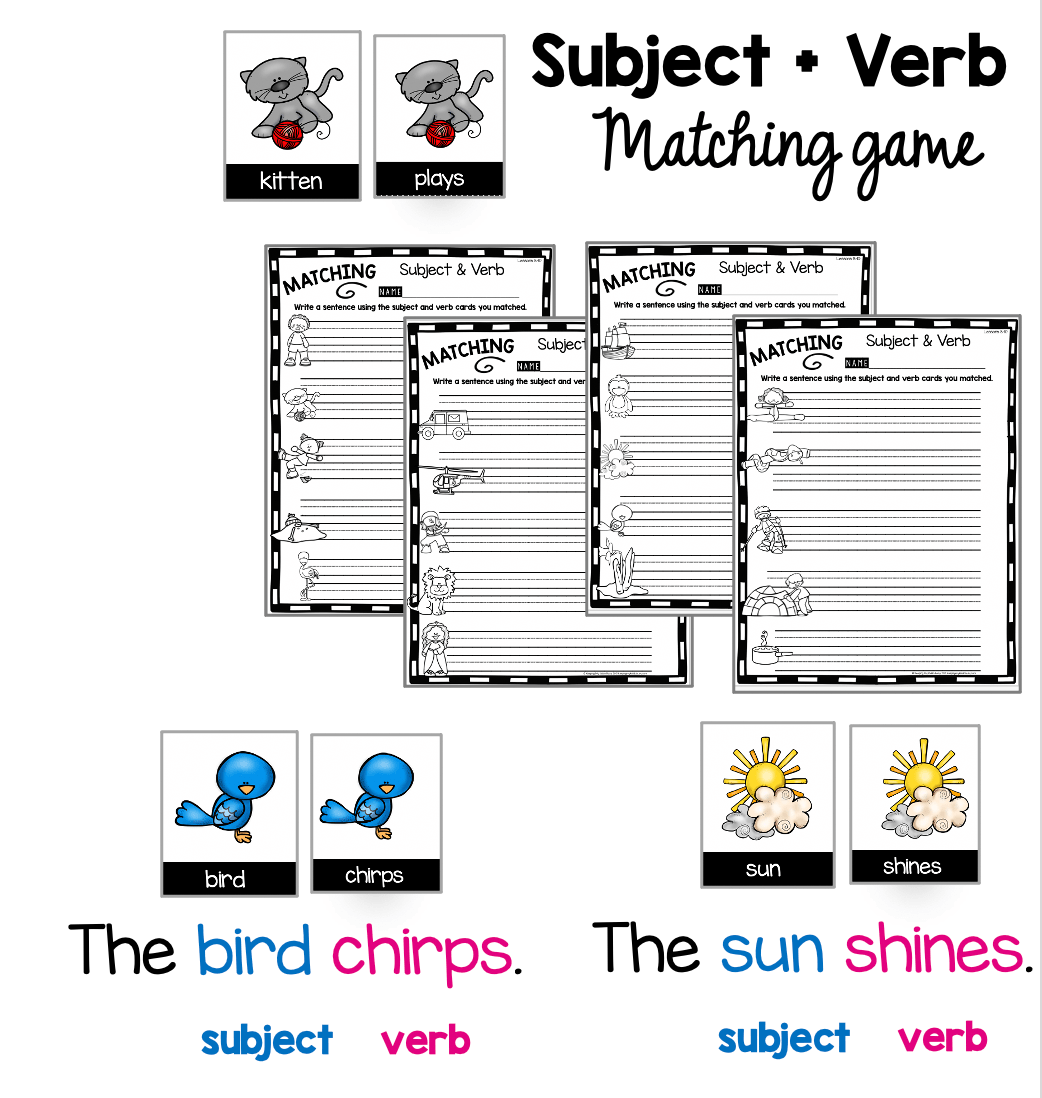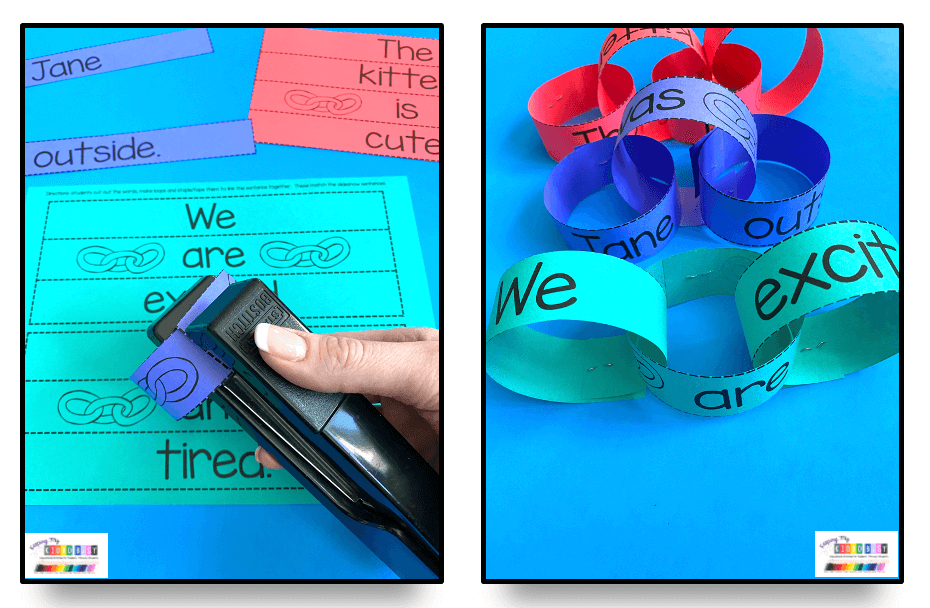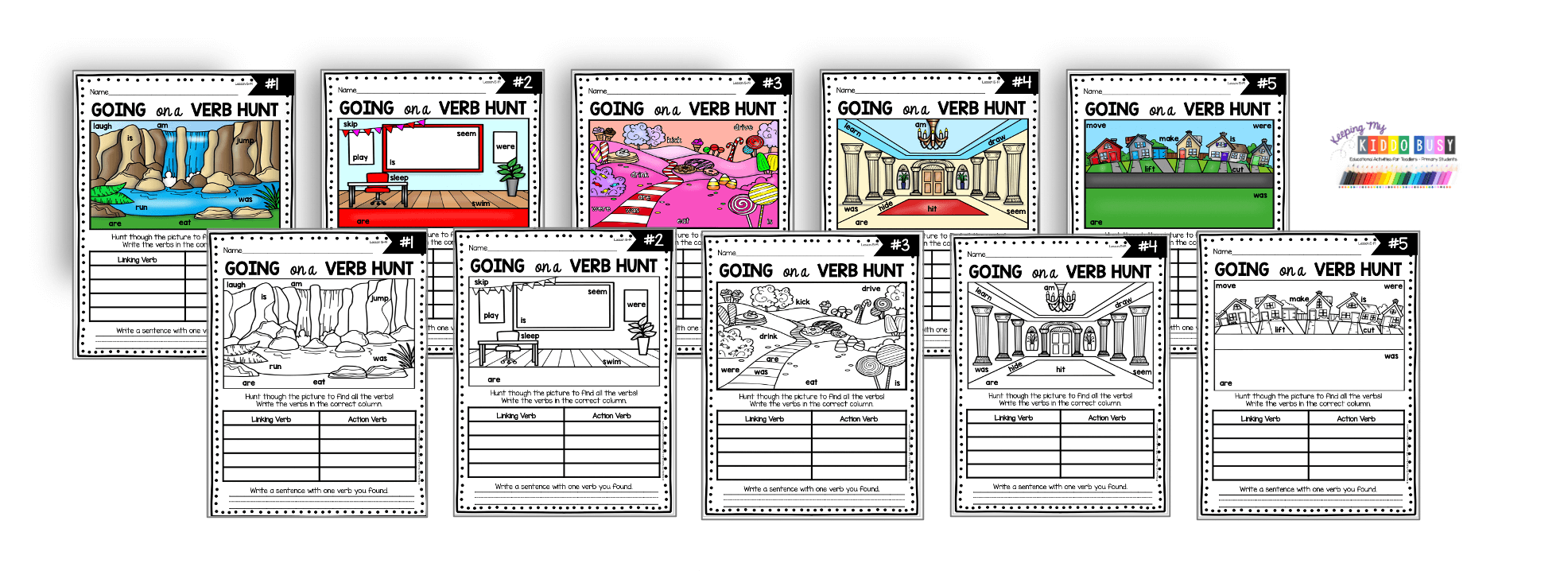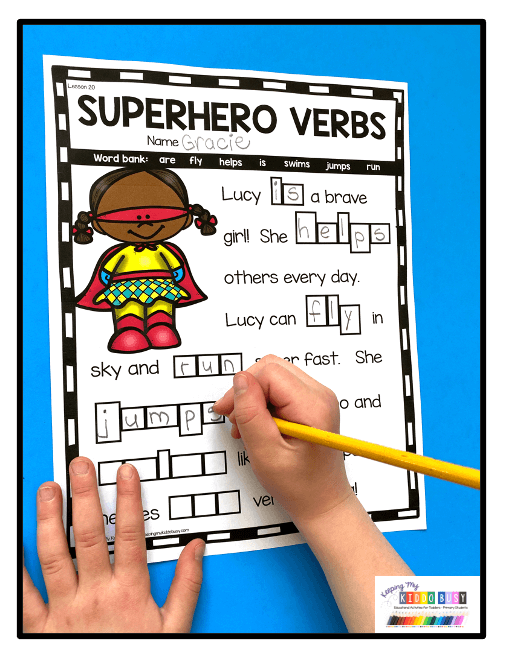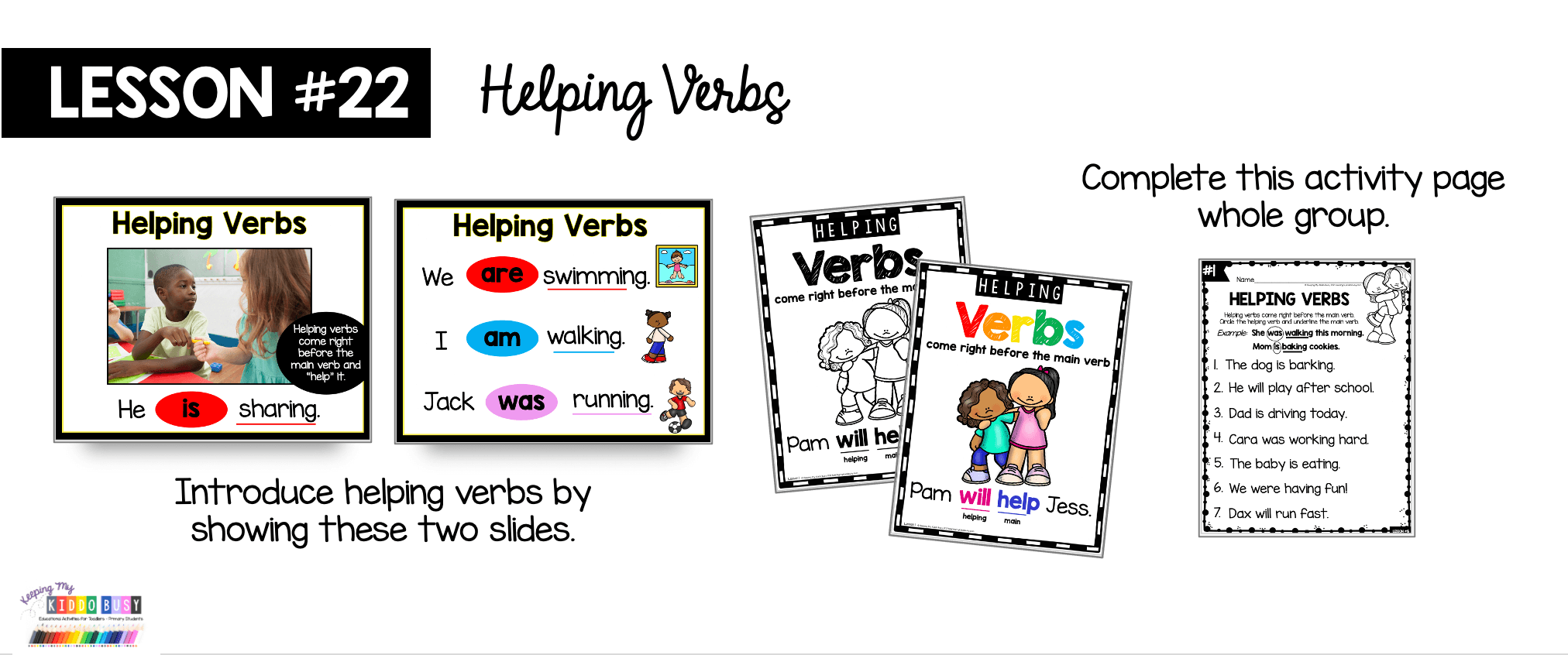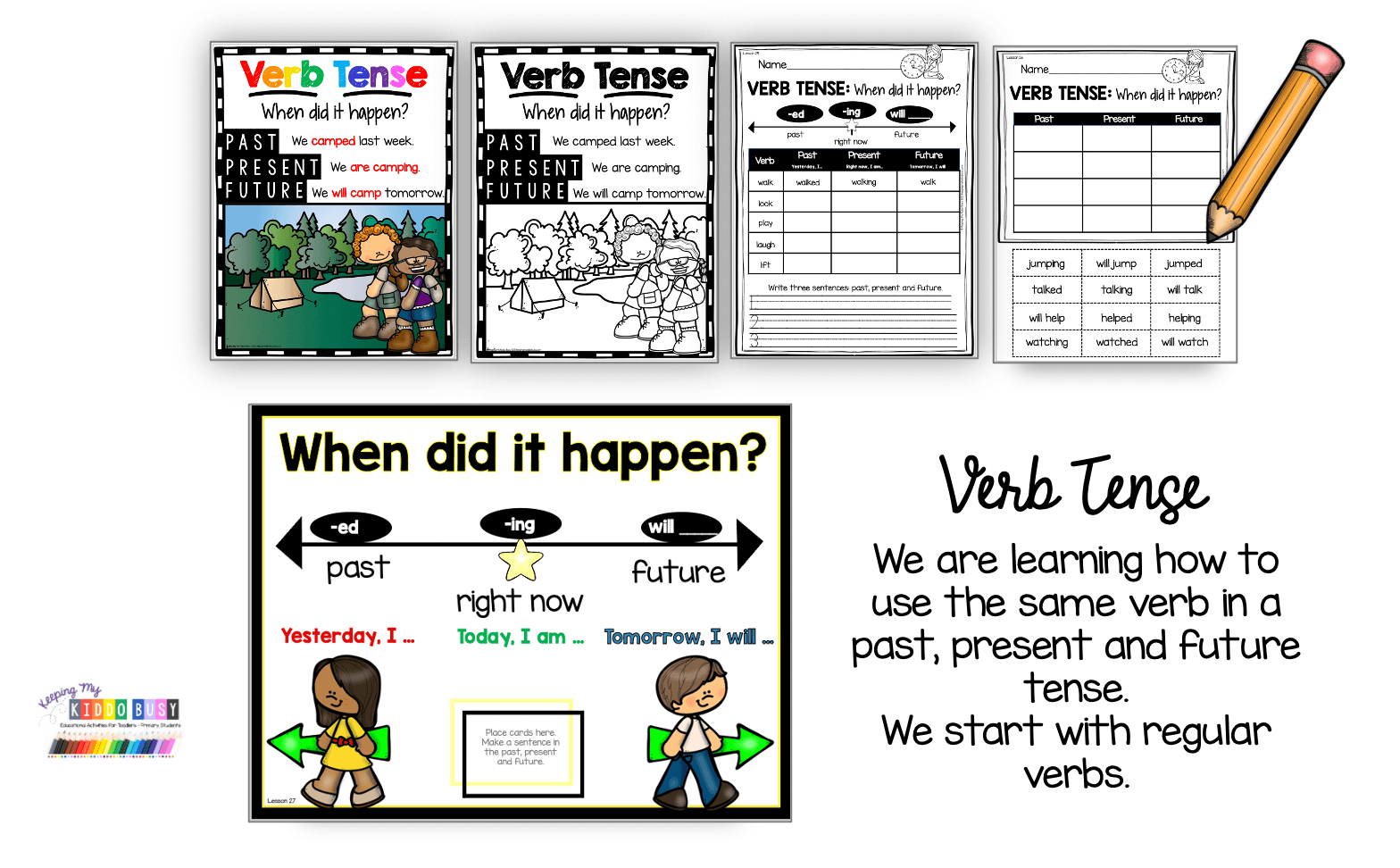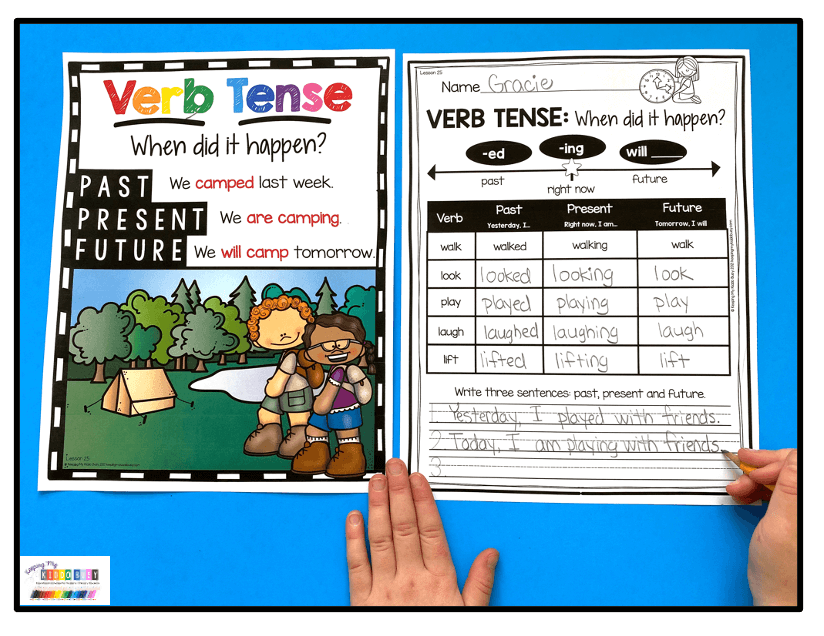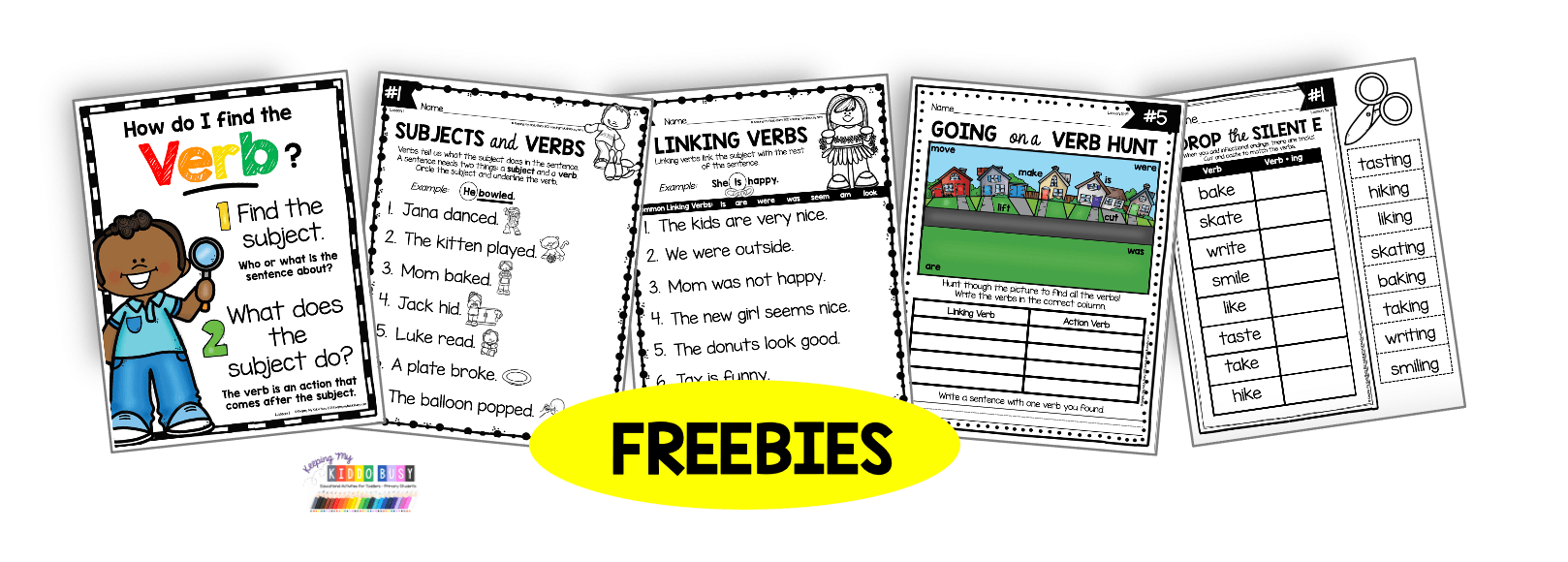How to teach Verbs - Primary Grammar with FREE activities
PRIMARY GRAMMAR UNIT 3: VERBS
It is time to teach verbs!
My students have come so far with their understanding of sentence structure since we studied Unit 1 Nouns and Unit 2 Adjectives.
This is now where the magic happens. A light bulb clicks on and students truly start understand the patterns in our language and sentence structure.
Plus, this unit about verbs is SO much fun! I share a ton of freebies for you to try right here on this blog post.
This page contains affiliate links. Read Full Disclosure
Let’s get started.
All the lessons and activities are planned out for you! 40 lessons are outlined in my plans, but you can use all of the worksheets, centers and activities as you see fit.
The unit progresses sequentially and slowly builds on itself. We start with very basic sentence diagramming and identifying parts of speech.
I tell my students that a sentence can be two words because all it needs is a subject (noun) and a verb.
Who or what is the sentence about? SUBJECT
What do they do? VERB
I have a little song/chant I do and the kids pick it right up. Sometimes they simply don’t now where to start when diagramming sentences or trying to identify parts of a sentence.
So I sing the little song, “Who or what is the sentence about?” and this is a little hint for them.
Tip: always start with finding the subject of a sentence. After you find the subject, it is much easier to figure out the verb.
The first few lessons, I show slides and ask those two questions. I use the same sentence structure and this builds student confidence.
We are then ready to put our skills into action! The first few activities in this unit are structured so students can be successful and their confidence sky rockets.
Teaching grammar to primary students does not have to be complicated or overwhelming.
The worksheets help students apply what they learned and you can check for understanding.
They can write the sentences as you show the slides and this keeps them engaged. This can also be used as a follow up literacy center.
We are learning about action verbs in these lessons!
Teaching students that an action means “to do” something is super helpful. A trick I teach them is to put the word “to” in front of a word to see if it is an action.
This leads perfectly into lesson 5. What can you do at ___________
There are six places, and students sort the actions based on what you can do in each scene.
After we do hands-on activities, I always have a follow up activity to solidify concepts taught as well as for accountability.
I need to see that students are understanding what they did in the activity, and I have students write as much as possible.
On the recording page, they write what they can do (the verbs) at each of the six places.
We have had enough practice now that I tell students it is now their turn!
They have to generate verbs for each sentence.
This is a great check in or quiz to see where they are at.
Next up in this unit is a super fun game, similar to the one we did with matching adjectives to nouns.
They already know the format so it is quick and easy to get going.
There are so many ways to play this game. We always say sentences orally first and identify the subject and verb.
You can play go fish, memory, or just practice matching the cards. Then they can write their own sentence for each subject/verb pairs on the recording sheets.
I spend several days on this activity. This is an amazing activity for language development.
We are ready to move on to linking verbs!
I love making the linking chain sentences to introduce linking chains because it really helps students understand how linking verbs just link the subject to the rest of the sentence.
Here are some of the activities we do for the next few lessons.
I wish someone had taught me that when I was younger!
Now they are ready for these worksheets/activities.
ACTION VERBS VS. LINKING VERBS
These are similar to my noun hunts.
Students look through the picture and find all the verbs. They must write the verbs under the correct column - action or linking? Then they write a sentence using one verb on their own.
I use these over several days, and you could even use one as a quiz to check for understanding.
It is time for superhero verbs!
First, students fill in the missing verbs using the word bank in lesson 20. Both action and linking verbs are included.
The next day, students get to write a superhero story using exciting verbs (a word bank is provided.)
I love seeing students be so successful as I pull the scaffolding back.
I designed this unit so students can become successful on their own while reading, writing and understanding parts of speech.
What are helping verbs?
We are progressing right through this unit, and now that we have learned action verbs and linking verbs, we can now tackle helping verbs.
This is a little more confusing for children to learn, which is why they come after the first two kinds of verbs.
Helping verbs are essentially linking and action verbs combined. When you have a linking verb right before an action verb, the inking verb is helping the action verb.
Examples: is sleeping ; am laughing : were driving
When did it happen? How to teach verb tense.
I spend a few days teaching verb tense. For many children, this will come naturally, but it helps with overall language development and awareness.
These lessons are incredibly beneficial if you have ELL students.
Students love matching the puzzles and completing the follow up activity by cutting and pasting the irregular verbs.
Next, we use these adorable color coded verb cards.
I suggest laminating them so they can be used in pocket charts.
Here is a great pocket chart that stands up so students can use these cards in a literacy center.
There are so many fun games to play with these colorful cards.
They are color coded so children can match the verbs, and then they can also be sorted based on their inflectional endings.
For example, I start with matching all the verbs (shown on the left).
Then we sort based on the patterns with inflectional endings.
Sometimes you can just add -ed and -ing and the spelling of the base word doesn’t change.
However, sometimes there are tricks like dropping the silent e (bake = baking), or doubling the last consonant (hug - hugged).
The recording pages are perfect for accountability after they sort the cards.
I always use a follow up activity to hold students accountable for tasks completed during centers. It is also a great check for understanding.
I finish the unit with a few lessons on verbs that are synonyms and antonyms. Students match and substitute verbs that means almost the same thing, as well as verbs that mean the opposite.
These are great lessons for making connections and expanding their vocabulary.
WATCH THIS QUICK VIDEO TO SEE HOW FUN THIS UNIT IS TO TEACH!
Ready to get started?
This unit is the next step after teaching Unit 1 Nouns and Unit 2 Adjectives.
“This unit makes learning grammar both fun and engaging. The lessons are easy to follow and there are many opportunities for students to practice what they have learned.”
“Just perfect for my K-2 class. Looking forward to other units. Awesome resource : )”
“Fabulous resource! Buy it!!!!!”
TRY A FEW FREEBIES!
CLICK HERE TO VISIT MY GRAMMAR HOMEPAGE
